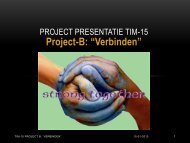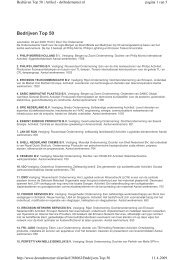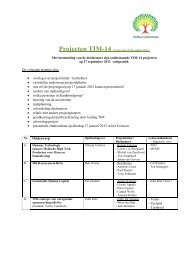The Triple Helix of university–industry–government relations
The Triple Helix of university–industry–government relations
The Triple Helix of university–industry–government relations
You also want an ePaper? Increase the reach of your titles
YUMPU automatically turns print PDFs into web optimized ePapers that Google loves.
L. LEYDESDORFF, M. MEYER: <strong>The</strong> <strong>Triple</strong> <strong>Helix</strong> <strong>of</strong> <strong>university–industry–government</strong> <strong>relations</strong><br />
& TRAJTENBERG, 2002). However, an information-theoretical perspective on the<br />
knowledge content <strong>of</strong> innovations (NARIN & NOMA, 1985) has hitherto not been<br />
developed sufficiently (LEYDESDORFF, 2001A; MEYER, 2000).<br />
<strong>The</strong> methodological problem <strong>of</strong> different perspectives at interfaces<br />
While the economic and geographical analyses can consider knowledge-based<br />
innovations as variables in market systems, the information-theoretical approach <strong>of</strong><br />
science and technology studies has to open the black box (ROSENBERG, 1982; GILBERT<br />
& MULKAY, 1984). From a knowledge-based perspective the performative events (e.g.,<br />
knowledge-based innovation) can be deconstructed and compared with other possible<br />
events. This perspective focuses on the interactions among the codified discourses <strong>of</strong><br />
other disciplines (COWAN & FORAY, 1997; WOUTERS, 1999) and therefore has to<br />
become reflexive about its own epistemological status as yet another perspective<br />
(ROSENBERG, 1976, MULKAY et al., 1984; LEYDESDORFF, 2001b).<br />
Each <strong>of</strong> the subdynamics can be studied by using a discursive metaphor that reduces<br />
the phenotypical complexity into a geometry. For example, evolutionary economists are<br />
interested in studying how technological change and stabilization are brought about<br />
over time, while neo-classical economists are mainly interested in the market<br />
equilibrating mechanisms at each moment in time. Analogously, in science studies we<br />
have witnessed debates between sociologists mainly interested in the practices <strong>of</strong><br />
knowledge production at the laboratory bench (EDGE, 1979) and others who noted the<br />
asymmetries between local communication and the transformation <strong>of</strong> knowledge claims<br />
when competing for validation (GILBERT & MULKAY, 1984). <strong>The</strong> various metaphors<br />
span universes which are potentially incommensurate.<br />
<strong>The</strong> epistemological reflection becomes increasingly urgent when we move from<br />
science to studying science-based innovation or science policy issues at interfaces. In<br />
general, innovations take place at interfaces, and interfaces can be approached from two<br />
sides by definition (LEYDESDORFF, 1994; WOUTERS, 1999). <strong>The</strong> systems <strong>of</strong> reference<br />
can thus be different, and in this case the same indicators can be expected to have<br />
different meanings. Within scientometrics, for example, one is aware <strong>of</strong> the tension<br />
between indicators (e.g., citations) which are useful for science-policy making and the<br />
use <strong>of</strong> these same indicators in information retrieval.<br />
A complex system develops in terms <strong>of</strong> fluxes through the networks. <strong>The</strong>se can be<br />
modeled in simulations, for example, by using difference or differential equations.<br />
However, the structural constraints have first to be specified theoretically and<br />
empirically. In order to specify the equations empirical data have to be appreciated.<br />
194 Scientometrics 58 (2003)







